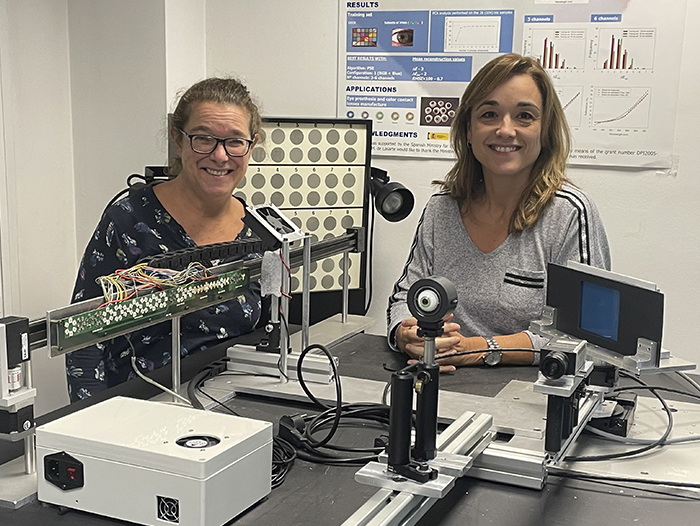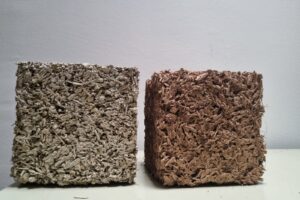
SAFEPASS: A polyurea-concrete construction system to improve safety in the conservation of infrastructures
November 29, 2023
More reliable and more durable ammonia sensors to improve the well-being of animals and reduce production costs on farms
January 18, 202404/12/2023
An international consortium of universities, hospitals and companies, led by the Centre for Sensors, Instruments and Systems Development (CD6) at the UPC, is developing new technologies based on light and artificial intelligence to improve the diagnosis of various diseases.
New photonic and artificial intelligence (AI) tools will be developed for the early diagnosis and precise treatment of ocular, cardiovascular and neurodegenerative diseases. This is the objective of the European BE-LIGHT project, coordinated by the Centre for Sensors, Instruments and Systems Development (CD6) at the Universitat Politècnica de Catalunya - BarcelonaTech (UPC). Participants in this project include a total of seven academic institutions, three hospitals and seven companies in Germany, France, Poland, Switzerland and Spain.
The BE-LIGHT project represents a step forward for knowledge and diagnosis of retinal diseases. Through the use of neural networks and optogenetic techniques, the new tools that are developed will promote better understanding of the functioning of the retina and the exchange of information between neurons, so that, based on quantitative models, retinal diseases can be detected.
The combination of various photonic technologies such as multispectral images and optical coherence tomography, complemented with AI algorithms, enables a precise analysis of various ocular structures (cornea, vitreous body, fundus) for the early detection of visual impairments and oculomotor disorders. In addition, assessment with AI of eye movement patterns, which are strongly controlled by several brain areas, could offer new diagnostic tools for neurological diseases, such as Alzheimer or long Covid.
The project will also make possible the development of new clinical instruments and methods that can be used, for example, to obtain images of blood vessels or ocular structures of the patient through optical tomography and optoacoustics or thermal image. This technology will help in the non-invasive, early detection of plaques of arteriosclerosis, among other disorders. Likewise, new automatic learning tools will be developed for the treatment and monitoring of cardiac arrythmias with light, which could replace current techniques based on electrical stimuli. The use of AI in combination with techniques of super-resolution microscopy will enable images of biological structures of less than a nanometre to be obtained, such as proteins involved in Parkinson’s disease and other rare diseases, which will improve the diagnosis.
Budget and funding
The consortium, led by Meritxell Vilaseca, researcher at CD6 and Cristina Masoller, researcher in the group Nonlinear Dynamics, Nonlinear Optics and Lasers (DONLL), has funding of 2.5 million euros from the European Union’s Horizon Europe programme, within the Marie Sklodowska Curie (Doctoral Networks) Actions. BE-LIGHT has a duration of 48 months (October 2023 – September 2027).

Researchers Cristina Masoller and Meritxell Vilaseca in the laboratory

The initial project meeting was held in Barcelona in November

International team involved in the project
Related Projects
- A research team from the inLab FIB at the Universitat Politècnica de Catalunya - BarcelonaTech (UPC), together with the Asociación de Personas con Movilidad Reducida (AsoPMR), has taken part in the Spot4Dis project to enhance the mobility and autonomy of people with reduced mobility.
- The La Volta project foresees the construction of a large Catalan vault pergola within the Llars Mundet campus, in the Montbau neighbourhood (Horta-Guinardó district). This structure will become a new architectural landmark for Barcelona, combining traditional construction techniques with contemporary innovation. The project involves the Rehabilitation and Architectural Restoration Research Group (REARQ), at the Universitat Politècnica de Catalunya - BarcelonaTech (UPC), and is led by the Architects’ Association of Catalonia (COAC) and the Barcelona Provincial Council.
SATE-VEG: A system for energy renovation of buildings that helps reduce the urban heat island effect
Researchers from the Architecture, Energy and Environment (AiEM) group at the Universitat Politècnica de Catalunya - BarcelonaTech (UPC) have developed SATE-VEG, an external thermal insulation system with a vegetal coating that offers seasonally adaptive thermal behaviour, enhances urban biodiversity and promotes positive health effects. The system is made from organic materials, requires low maintenance and consumes minimal water.- A research team from the Interdisciplinary Group on Building Science and Technology (GICITED) at the Universitat Politècnica de Catalunya – BarcelonaTech (UPC) is leading the BioSAFE project, which aims to develop sustainable building envelopes —mainly façades— designed according to sustainability, comfort and safety criteria, with particular attention to their acoustic behaviour and fire performance.




